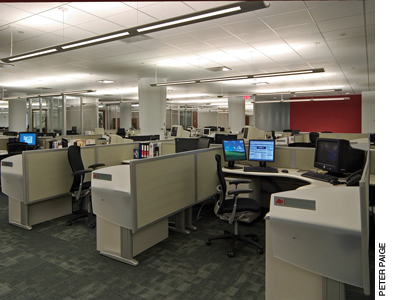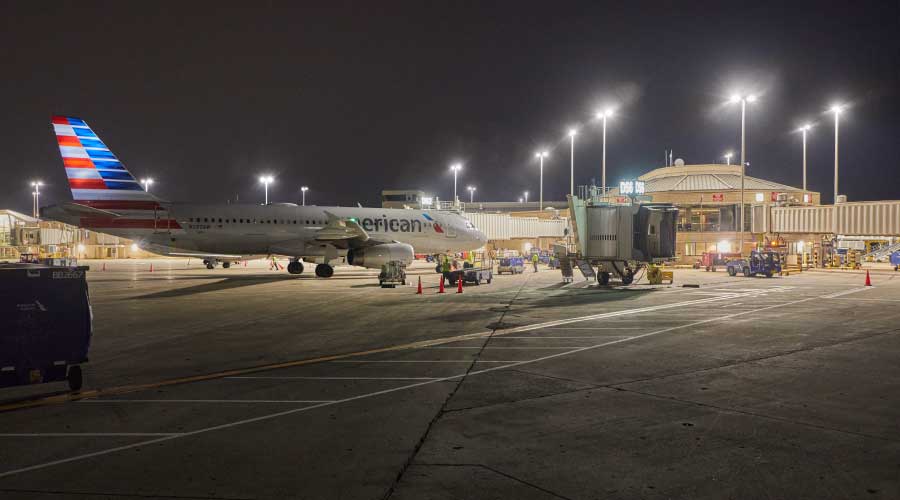10 Questions To Ask Before A Lighting Upgrade Begins
When considering a lighting upgrade, the first impulse is to retrofit the existing installation by replacing lamps and ballasts, or even replacing existing fixtures with new ones. But often this is not the best long-term solution. There are many circumstances where a retrofit is a poor investment and results in throwing good money after bad. Retrofits are also subject to "cream skimming," where the proposed solutions target the easiest savings with the lowest first cost. It is easy to increase efficiency and decrease consumption — the challenge is to provide acceptable lighting quality and designs that retain their savings over the long run.
True value can come from redesign. Redesign includes assessing the qualitative aspects of the design and exploring potential improvements to lighting quality while saving energy.
Qualitative features include glare control, contrast, color rendering, visual comfort and other elements that have an impact on work performance, retail sales, and health and well-being of the employees, occupants and visitors of buildings. Light levels are seldom the most important element of quality.
In fact, the desire to maintain or increase the quantity of light on the task surface often results in designs where the luminaires re-direct more light downward. The resulting effect is less light on walls and faces, significantly reducing lighting quality. More efficient lamps and ballasts are unlikely to improve lighting quality, even if the quantity of light is increased. The greater brightness of energy efficient lamps like T5 fluorescent and LEDs are likely to increase glare.
The first question facility managers should ask when considering a lighting upgrade is, "What is the purpose of the lighting?" The answer is so much more complex than, "To see the task." In an office, lighting contributes to long-term satisfaction with the work environment and overall work performance.
Important questions include: Would you want to spend eight hours in this space? Is the electric light balanced with the daylight; is there enough variation and stimulation without harsh shadows and distracting hot spots? Can the performance of multiple tasks be accomplished free of glare and with light levels that can be controlled by the individual? Are face-to-face discussions enhanced by flattering lighting that enables facial expressions to be clearly read?
These are not minor issues. Energy savings without quality will inevitably backfire. If the quality of light in a space is poor, occupants tend to "self-medicate" — take more sick days, work less effectively, bring in their own (inefficient) desk lamps, or disable an improperly calibrated control system. These can have a negative impact on energy savings, causing "bounce-back" as energy consumption starts to creep up after a retrofit.
Here are 10 other questions facility managers should ask in evaluating a lighting redesign versus a retrofit.
When Is Redesign The Best Choice?
If your project has the following characteristics, redesign is the best choice.
- New tenants or major renovation
- Replacement of ceilings or electrical components
- Need for new luminaires
- High labor costs
- Utility or other incentives
- Energy code or LEED compliance
— Hayden McKay

When The Associated Press relocated its headquarters to the top three floors of the New York Daily News building in Manhattan, the lighting system was redesigned to allow personal control for each employee. In addition to offering flexibility for employees, energy consumption decreased by about 25 percent. |
What Spaces Are Poor Candidates For Retrofit?
- The quantity or quality of light is marginal, unacceptable
- The functions of the space have changed (office workers now work more on computers than with paper)
- Furniture and partitions are high, blocking the light distribution
- Existing luminaires and controls are outdated, reducing the full savings potential. Avoid installing more efficient lamps in an inefficient luminaire, such as 2-by-2 foot troffers, or parabolic or flat-lensed fixtures.
- The same luminaire is used everywhere, for every function, rather than the luminaire being tailored for the application
— Hayden McKay |
Related Topics:















